
http://www.iaeme.com/IJMET/index.asp 1301 editor@iaeme.com
International Journal of Mechanical Engineering and Technology (IJMET)
Volume 10, Issue 03, March 2019, pp. 1301-1312. Article ID: IJMET_10_03_132
Available online at http://www.iaeme.com/ijmet/issues.asp?JType=IJMET&VType=10&IType=3
ISSN Print: 0976-6340 and ISSN Online: 0976-6359
© IAEME Publication Scopus Indexed
ANALYZING FACTORS INFLUENCING
INDUSTRIAL COMPETITIVENESS OF THAI
SILVER JEWELRY INDUSTRY USING
ANALYTIC HIERARCHY PROCESS
Chanida Phittayanon and Vichai Rungreunganun
Department of Industrial Engineering, Faculty of Engineering
King Mongkut’s University of Technology North Bangkok, Bangkok, Thailand.
ABSTRACT
Promoting export-based industry is a challenging task. Industrial competitiveness
is frequently used as the overall indicator. The article offers a novel result of priority
weights of Thai silver jewelry industry.
Factors that may influence the industry were collected by literature reviews. Then,
industry experts and entrepreneurs choose and classify the factors into performance
drivers. There are 32 factors organized into 7 categories or drivers. Next, the analytical
hierarchy process (AHP) is utilized to calculate priority weights of factors.
As a result, the sales-and-marketing driver is the most important driver, and labor-
intensive tasks dominate the competitiveness of the industry. On the other hand, the
research community could use the priority weight of factors in their research and
develop policies to promote the industry.
Keywords: Silver Jewelry, AHP, Supply Chain, Competitiveness.
Cite this Article: Chanida Phittayanon and Vichai Rungreunganun, Analyzing Factors
Influencing Industrial Competitiveness of Thai Silver Jewelry Industry using Analytic
Hierarchy Process, International Journal of Mechanical Engineering and Technology,
10(3), 2019, pp. 1301-1312.
http://www.iaeme.com/IJMET/issues.asp?JType=IJMET&VType=10&IType=3
1. INTRODUCTION
The jewelry industry is a large part of Thailand economic [1] which employed several thousand
high-skill workers and millions of people in related industries [2]. Thailand is one of the top
exporters of silver jewelry (HS 711311) in the global market [3]. Competing in the global
jewelry market is a key challenge for Thai silver jewelry industrial.
The jewelry industry is very dynamic. The price of raw materials is very fluctuated,
especially for precious metal. The jewelry product is a fashion product with a short life cycle.

Chanida Phittayanon and Vichai Rungreunganun
http://www.iaeme.com/IJMET/index.asp 1302 editor@iaeme.com
As a result, the manufacturing process is a fine process with low volume production. Therefore,
it relies heavily on high-skill labor processes.
To be more competitive, manufacturers, wholesalers, retailers, and traders of Thai jewelry
industry have established the Thai Gem and Jewelry Traders Association (TGJTA) [4] to
promote the industry. Similarly, the Thai government also establish the Gem and Jewelry
Institute of Thailand (GIT) [5]. These private and public organizations have invested in several
projects to overcome challenges and increase competitive advantages among its members and
the industry as a whole.
However, there are still debate among experts on the effectiveness of investment to promote
the industry. The overall industrial competitiveness is a generic indicator that used in several
industries [6]–[10]. However, there is no commonly agreed method to evaluate IC for the silver
jewelry industry. This study uses the analytic hierarchy process (AHP) technique to develop a
model to evaluate industrial competitiveness.
In this work, we collect factors that influencing the silver jewelry competitiveness from
literature and use the AHP method to determine the priority weights of the factors. This article
is organized as followed. The literature review is carried out in Section 0. The AHP
methodology that we used in this work is discussed in Section 0. The resulting AHP evaluation
is shown in Section 0. A discussion of AHP priority weights is presented in Section 0. Then, a
conclusion is presented in Section 0.
2. LITERATURE REVIEW
2.1. Industrial Competitiveness
Companies always need to balance resources between various business objectives, i.e. problem
solving for a short-term benefit or investing in resources for long-term growth. This results in
a complex relationship between short-term and long-term growth. In addition, companies also
need to overcome challenges outside of the company. Industrial competitiveness has become a
major business indicator for entrepreneurs, economists, and industrial engineers.
Evaluating industrial competitiveness is a challenging task that relies heavily on expert in
the business. The Analytic Hierarchy Process (AHP) has become a popular technique to
combine difference opinion from many experts [6]–[10]. The AHP technique also provides a
statistical tool to check for consistency in the expert opinion.
An AHP method has been used to evaluate industrial competitiveness for a generic company
by considering only the marketing, company resources, and environment factors [6]. Applying
AHP with the Potter diamond model has been proposed to evaluate IC [7]. Similarly, AHP was
used to help in a decision-making process of investing in automation robots in the automotive
industry [8], [9]. In sustainable manufacturing, the same technique has been used by
emphasizing on Green technology [10].
3. THAILAND SILVER JEWELRY INDUSTRY
3.1. Supply Chain
In Thailand, there are a lot of firms in the jewelry manufacturing segment. Most of them entered
this industry by the trading of gemstone or other jewelry. A study of Thailand silver jewelry
industry [11] has shown that the supply chain structure of Thailand silvery jewelry industry can
be divided into 4 stages as shown in Figure 1.

Analyzing Factors Influencing Industrial Competitiveness of Thai Silver Jewelry Industry using
Analytic Hierarchy Process
http://www.iaeme.com/IJMET/index.asp 1303 editor@iaeme.com
Figure 1 Supply Chain of Thai silver jewelry industry
The upstream process involves raw material acquisitions of precious metals and gemstones.
In Thailand, jewelry’s raw materials are mainly imported. This is the lowest value-adding
process in the supply chain because raw materials must be imported.
The midstream process includes processing of raw materials. These processes include
cutting, polishing, and processing of gemstones and precious metals. These are a medium value-
adding process.
The downstream process is the manufacturing of jewelry which can be divided into two
groups. The first group is handmade jewelry manufacturers that focus on the high-end market.
This is a high value-adding process. The other group is machine-based manufacturers that mass
produce for the high-volume market. This is a low value-adding process.
The distribution process includes domestic retailer with its brand and export to the global
market. This process is a high value-added process.
The Thai Ministry of Industry has announced a master development plan [12]. The master
plan stated three priority factor-categories to promote the industry. The three categories are (1)
manage raw material cost, (2) create a measure to improve marketing channels, and (3) improve
supporting structure to promote the industry.
3.1.1. Manufacturing Segment
The cost structure of Thailand jewelry manufacturers has been studied in 2003 [13]. Major parts
of raw material cost are for gemstones and precious metals which are about 35% and 30%,
respectively. While the total cost of raw material is about 70%.
Most silver jewelry manufacturers in Thailand are small and medium businesses [1]. The
composition is as followed. 58% of them are family businesses, 20% of them are small
businesses, 5.3% of them are medium businesses, and only 0.8% of them are large businesses.
It is also found that most jewelry businesses are inherited from their parents [2]. And, a lot of
jewelry manufacturers are original equipment manufacturers (OEM) for a large global brand
[2].
A study of problems in Thailand jewelry industry in 2002 [14] has suggested some measures
to improve the industry. These measures included improving labor competency and jewelry
design capability.

Chanida Phittayanon and Vichai Rungreunganun
http://www.iaeme.com/IJMET/index.asp 1304 editor@iaeme.com
3.1.2. Surrounding Factors influencing the industry
Lacking domestic raw material is the main challenge in the upstream process. Thai silver
jewelry needs to import most of the precious metal and gemstone [2], [14]–[16]. However, labor
competency is the main challenge in midstream and downstream processes.
Considering the economy, the market ratio of Thai silver jewelry industry is approximately
80% exported and 20% domestic sales. Therefore, the domestic economic situation would not
have a major impact on the industry.
The Thai government has influenced the industry by issuing some measures. For example,
the establishment of the jewelry industrial development section within the Ministry of Industry
and the Gem and Jewelry Institute of Thailand [5]. There are some tax measures to promote the
industry, i.e. conditional VAT exempt, 1%-withholding tax exempt, no import tax, and VAT
exempt for rough gemstones (exclude diamond and peal).
4. DEVELOPMENT OF THE AHP MODEL
In 1971, Saaty proposed the AHP technique [17] which is a multi-factor decision-making tool.
Major advantages of AHP include an ability for solving unstructured problems with a high level
of complexity. This technique works by divide the problem into multiple hierarchy levels. The
hierarchy structure is set as followed. The top level is designated as the objective, while lower
levels are for drivers and factors. The priority weight within each hierarchy level is calculated
using predetermined measurement and judgment of experts using pairwise comparisons. Then,
the priority ranking and weight values are generated.
To determine relative priorities of factors that affect the industry, this research uses the AHP
technique which consists of the following steps.
Step 1: Define the objective
Step 2: Determine lower-level factors
Step 3: Construct a hierarchy structure of factors
Step 4: Survey of expert judgments of pairwise comparisons
Step 5: Determine priority weights of factors
Step 6: Check for consistency of pairwise comparisons
4.1. Define the objective
The objective of the AHP model is set to determine the industrial competitiveness (IC) of
Thailand silver jewelry industry. This is to improve the competitiveness and prioritize resource
allocation to promote the industrial.
4.2. Determine lower-level factors
A list of factors that may be influencing the industry was obtained from a literature review.
Then, the list is confirmed by a focus-group discussion. As a result, a total of 32 factors
influencing the industrial were identified. Next, factors were divided into seven factor-
categories which can be considered as competitive drivers. Seven drivers are business
partnerships (BP), internal management (IM), manufacturing (MF), product design (PD),
standard and certification (SC), sales and marketing (SM), and surrounding factor (SF).
4.3. Construct a hierarchy structure of factors
Drivers and factors that were identified in the previous step were organized in a hierarchy
structure which comprises of the objective, drivers, and factors. Therefore, a three-level
hierarchy structure was developed as presented in Figure 2. The top level of the model is the

Analyzing Factors Influencing Industrial Competitiveness of Thai Silver Jewelry Industry using
Analytic Hierarchy Process
http://www.iaeme.com/IJMET/index.asp 1305 editor@iaeme.com
overall objective which is the industrial competitiveness. The second level represents seven
categories of competitiveness drivers. Finally, the third level contains factors influencing the
industry of each category. This model presents the operational relationship between the overall
objective, drivers, and factors of the competitiveness that relevant to silver jewelry industrial in
Thailand.
Figure 2 The AHP model for industrial competitiveness of Thai silver jewelry industry.
4.4. Survey of expert judgments of pairwise comparisons
This step performs a comprehensive analysis of industrial competitiveness. By collecting of
expert judgments and evaluation. Experts were carefully chosen from the industry. In this study,
a group of 43 experts and entrepreneurs from Thailand jewelry firms were invited. First, they
were briefed about the research and the AHP method. Then, they were interviewed to assess
pairwise comparisons among seven drivers based on their potential to improve industrial
competitiveness. Then, each factor in the third level is compared with other factors within the
same category. As proposed by Saaty [17], the pairwise comparison uses a nine-point scale of
relative preference which is described in Table 1.
Table 1 Relative preference for a pairwise comparison [17]
Scale
Level of Relative Importance
9
Vastly more importance
7
Largely more importance
5
Much more importance
3
More importance
1
Same importance
8, 6, 4, 2
Intermediate level
By utilizing the scale shown in Table 1, eight pairwise comparison matrices for the overall
objective and seven drivers were constructed. Results of the comparison are put into a matrix
form. An example of the matrix of sales and marketing driver is shown in Table 2 in which the
cell data 𝑎𝑖,𝑗 represents the relative importance of the 𝑖 factor with respected to the 𝑗 factor and
can be computed using geometric mean of all responses as:


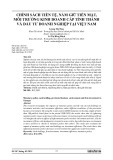
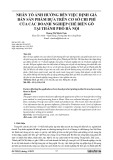
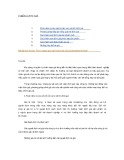
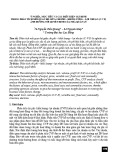
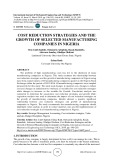
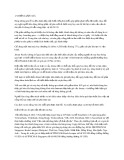
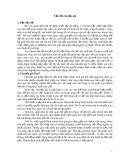
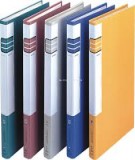
![Chiến lược giá: Tài liệu [mô tả/hướng dẫn/tổng hợp]](https://cdn.tailieu.vn/images/document/thumbnail/2015/20150122/anhduongit/135x160/4641421897150.jpg)















